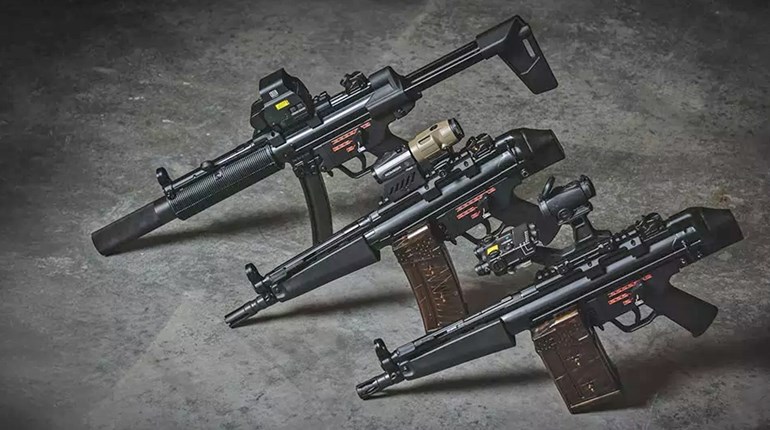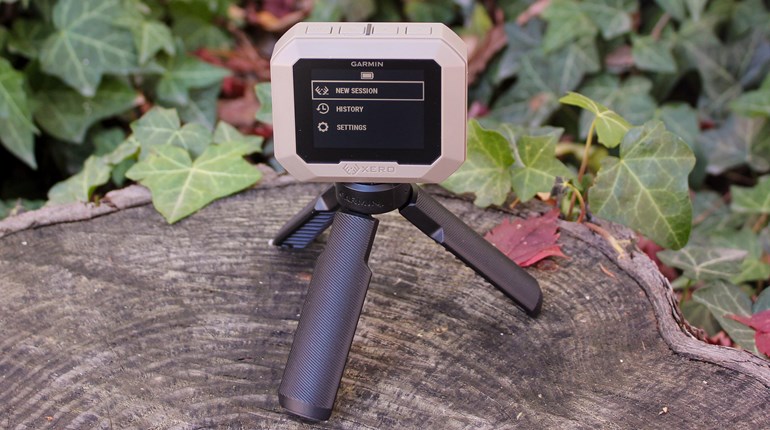
Modern, high-performance defensive pistol frames often begin life as modern, high-performance plastic, shown here in pellet form. Pellets like these are melted and injected into molds, resulting in the frames that are so familiar these days.
The movie “The Graduate” was before my time, and I’ve never actually seen the whole thing in one sitting, but there’s a scene that’s well-known enough to have become a meme back before memes were a thing. An avuncular neighbor takes Dustin Hoffman’s titular character aside just after he’s graduated college and, as a piece of career advice, offers one word: “Plastics.”
When the movie came out in 1967, plastics had been in use as a structural component of firearms for almost a decade already, in the form of Remington’s Nylon 66, which used the eponymous synthetic from DuPont for pretty much most of its construction.
Only a couple years after the movie, plastics had entered the handgun world, too, in the futuristic ray-gun shape seen in Heckler & Koch’s blowback 9 mm VP70.
Given this history, the hysteria about “undetectable pistols” (which are, of course, nothing of the sort) that attended the arrival of the Glock G17 in the ’80s seems difficult to understand. Looking back from 2020, when polymer frames are pretty much ubiquitous, it seems almost quaintly absurd.
Reading the ad copy from manufacturers, the benefits of polymer frames for handguns would seem to be legion. Polymer is lighter than pretty much any metal, and less weight on the hip is appreciated by many. Polymer also doesn’t rust or require any special coatings to protect it from even the harshest environments a gun is likely to encounter.
Polymers tend to have a natural lubricity—one of the most touted, reliability-enhancing features of the Nylon 66 was that the bolt didn’t require lubrication to function, since it rode on polymer rails. While most pistols that use polymer for the frame include metal rails for the slide to run on, that’s not universal. Ruger’s now discontinued P95, a pistol with a well-earned reputation for rugged reliability, had the slide in direct contact with the semi-automatic’s rails molded from the polyurethane of the frame itself.
There are even claims made that the flex in the frames of some pistols when they’re fired is a recoil-absorbing feature, but I find that a little bit of a stretch. I don’t know if there’s any really scientific way to measure that reduction and see if it’s greater than the recoil that would have been absorbed if the frame were several ounces heavier and made of steel.
One advantage not touted by manufacturers, but definitely there, is that polymer frames are easier for the shadetree home gunsmith to re-contour or texture to suit their personal tastes. The latest round of pistols like SIG Sauer’s P320, where the polymer frame is actually separate from the serialized “chassis,” make this an almost risk-free process, since if you botch it, you haven’t hurt the firearm itself and can go back to status quo ante for the relatively low cost of a replacement grip module.
If one doesn’t trust one’s own hand with a soldering iron, there are plenty of companies that specialize in this work, such as Boresight Solutions and Bowie Tactical Concepts.
The real reason for polymer frames, though, and why they’re here to stay, is that they are simply much, much less expensive to manufacture. Even in the age of computerized machining, it will always be quicker and cheaper to squirt goop into a mold than to machine a frame out of metal. And if the end result of the cheaper process also happens to have plenty of beneficial side effects, then what’s not to like about it?
It’s doubtful Dustin Hoffman’s party guest envisioned his wisdom applying to firearms, but if I could give you just one word about the future of handguns, it’d be “plastics.”



































